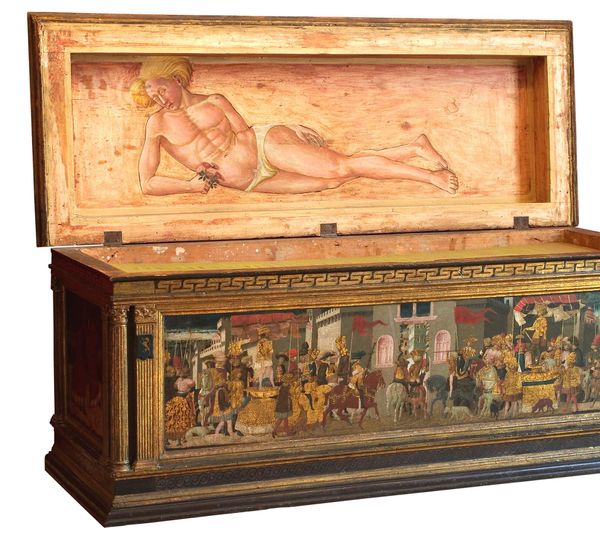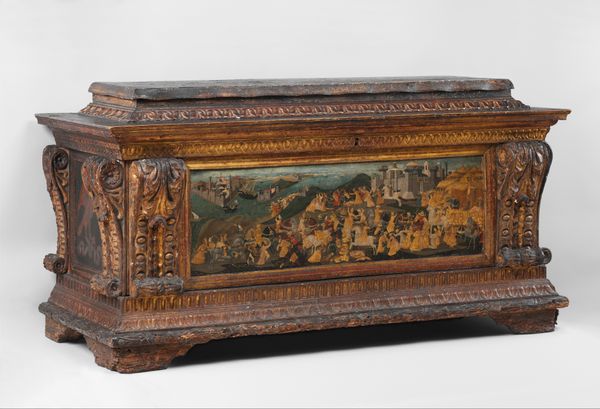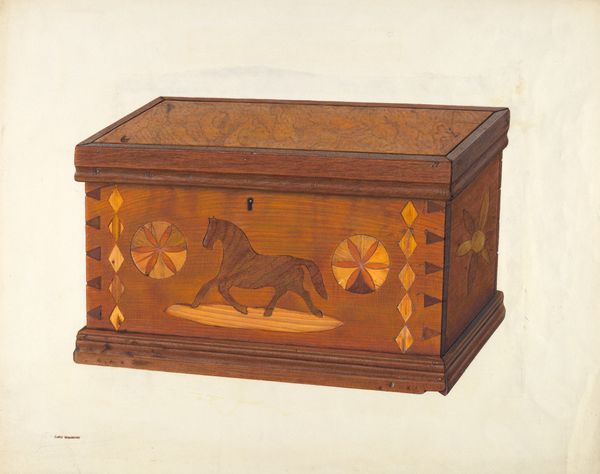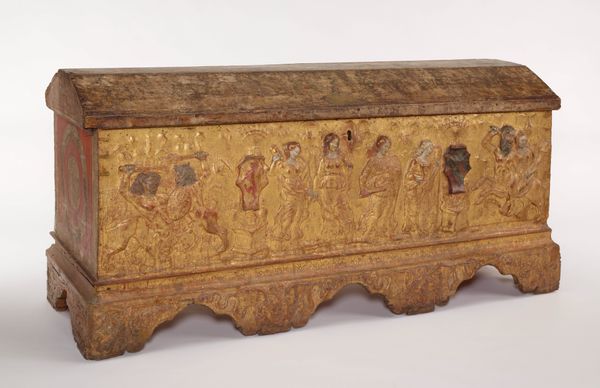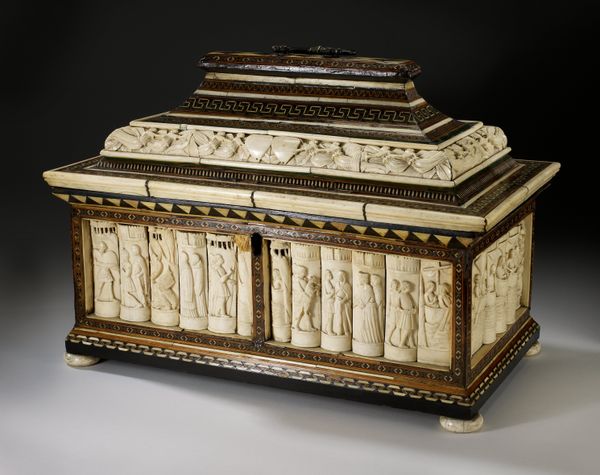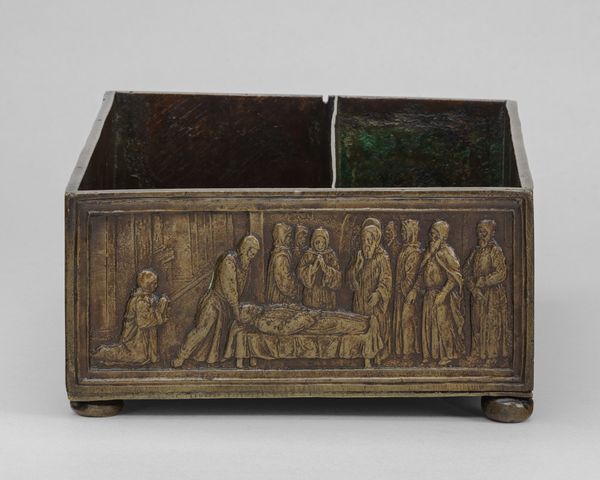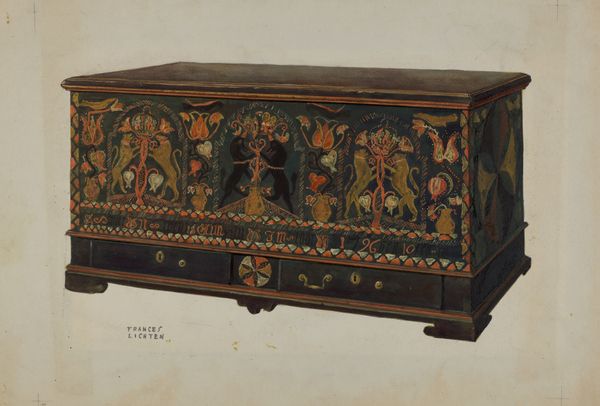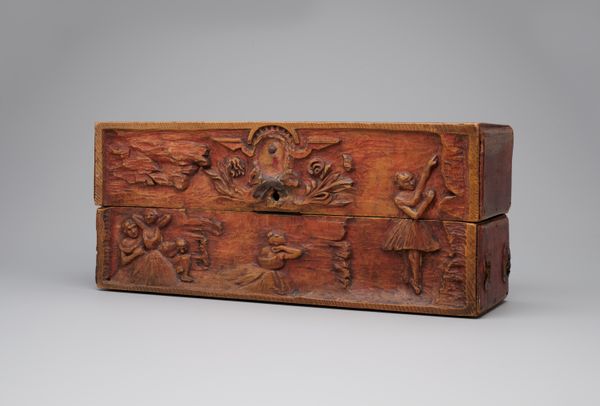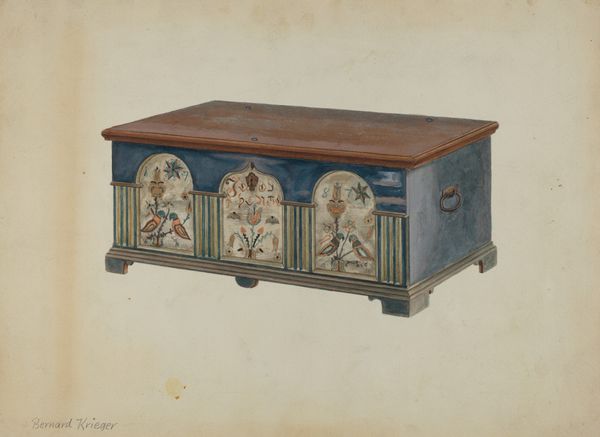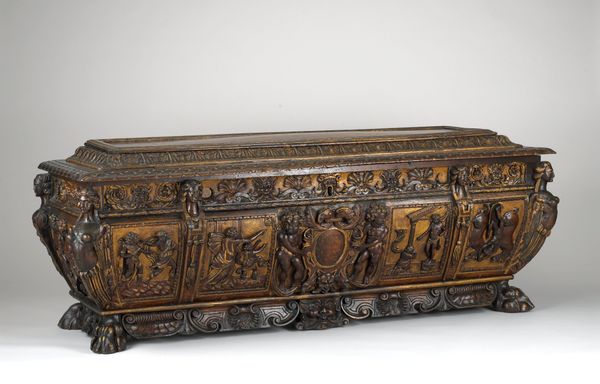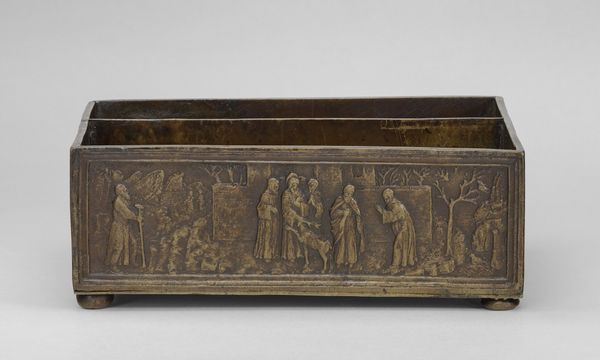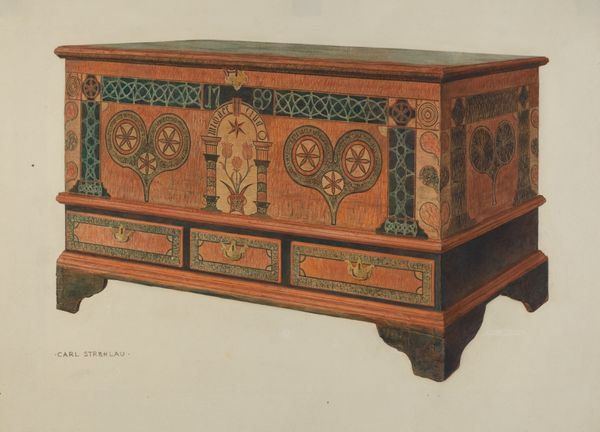
Nuptual Chest (Storage Chest). So-called "Cassone" or "Forziere" 1450 - 1475
0:00
0:00
painting, oil-paint, wood
#
allegory
#
narrative-art
#
painting
#
oil-paint
#
sculpture
#
figuration
#
oil painting
#
wood
#
genre-painting
#
history-painting
#
italian-renaissance
#
nude
Dimensions: 41.5 cm (height) x 165 cm (width) (Netto), 86.8 cm (height) x 207.7 cm (width) x 77.5 cm (depth) (Brutto)
Curator: What strikes you first about this chest? It is believed to have been crafted between 1450 and 1475 by Lo Scheggia. The museum titles it "Nuptial Chest (Storage Chest). So-called 'Cassone' or 'Forziere'". Editor: The stillness on top contrasts intensely with the lively procession painted across its front. It's as if the chest itself is a threshold between private and public spheres of Renaissance life, a woman's nude body resting in her domestic realm as it rises into public fanfare and spectacle below. Curator: Yes, it embodies duality. The reclining nude echoes classical depictions of Venus, goddess of love and beauty, perhaps symbolizing the sensuality and desire central to marriage. These chests, elaborately adorned, were customary wedding gifts in Florence. Editor: Customary gifts also steeped in patriarchal tradition. Cassoni often served as literal and figurative repositories for a bride's dowry – essentially, the economic compensation offered in exchange for the relinquishing of her freedoms and familial ties. Curator: The iconography extends beyond mere dowry display. Beneath the lid, that introspective Venus contrasts sharply with the wedding parade adorning the lower part of the chest. That looks like a festive scene celebrating the union of families. What do you make of this scene? Editor: Given its likely commission at a wedding, the "festive scene" below serves as propaganda: a grand procession reinforces wealth and legacy through dynastic connections. It romanticizes that which may very well be a transaction for political or economic advancement. Consider how it conveniently leaves out the often brutal realities facing women who enter marriage with limited agency. Curator: Still, art from this period offered allegorical visions of an ideal, not necessarily documentary realism. Even the image of the reclining woman is interesting from that perspective; is she being possessed or is she reveling in her self-awareness and pleasure? She doesn't appear to be merely an object. Editor: Precisely! That is the question worth examining more closely. Where does the patriarchal construction of marriage and idealized love begin and her potential erotic autonomy begin? We may never be certain, given that, as it seems, she had no voice in history. The chest thus offers a conflicted lens. Curator: It serves, therefore, as an artifact rife with interpretations of ritual and power, gender, class, and societal aspirations during the early Renaissance. Editor: A space holding complexities – a treasure chest not only of goods but layered, conflicting narratives surrounding love and power in the Renaissance.
Comments
statensmuseumforkunst almost 2 years ago
⋮
In fifteenth-century Florence all affluent couples owned beautifully painted chests for clothes and accessories. On the day of their wedding, these nuptial chests were carried by a procession of people, moving them from the bride’s parents’ house to her new home, where they were placed in the sleeping quarters. The front of such chests were usually decorated by non-religious motifs. This example depicts a story from the early days of Rome. The Romans had abducted the women of a neighbouring tribe, the Sabines, because they needed wives, but the Sabines sought to reclaim their women. The front of this chest shows the Sabine women standing in the gates of Rome, led by Hersilia, who is holding two swords while her father, Tatius, king of the Sabines, and her husband Romulus, first king of Rome, both kneel down as they make peace.
Join the conversation
Join millions of artists and users on Artera today and experience the ultimate creative platform.
